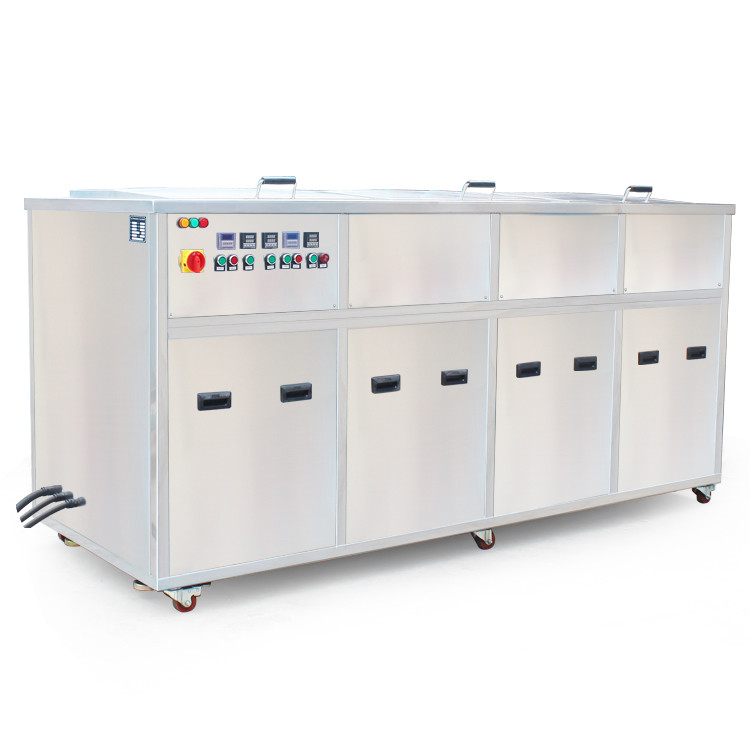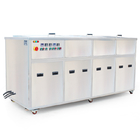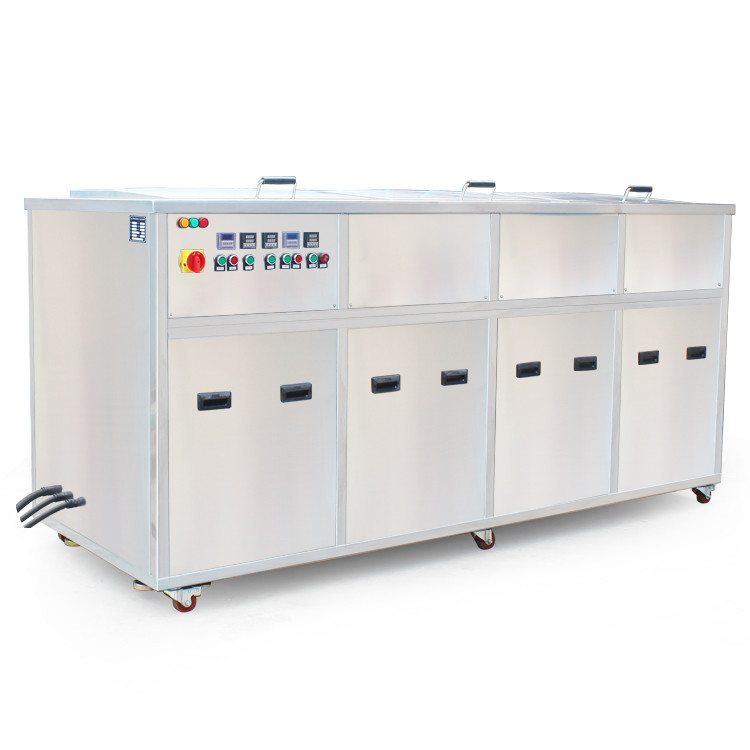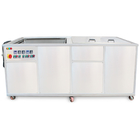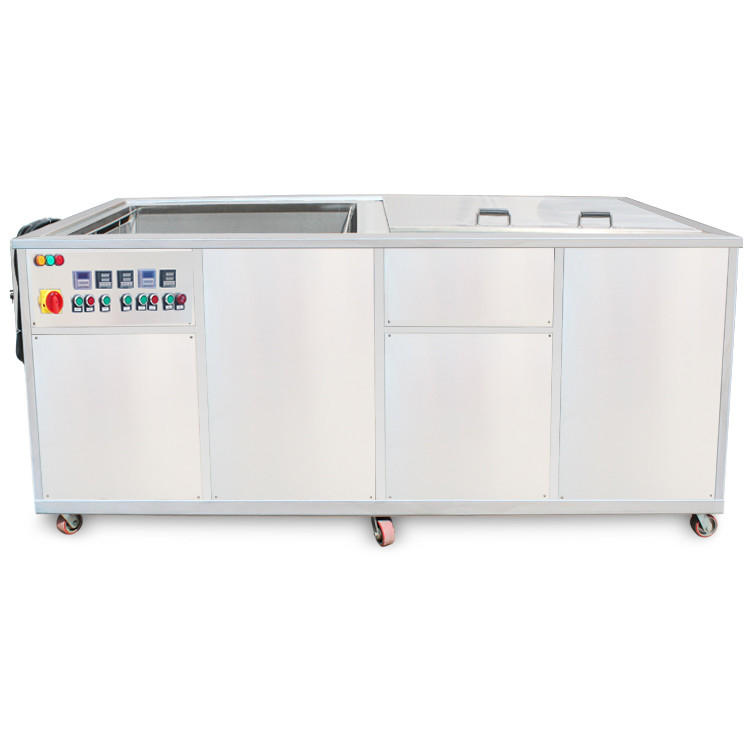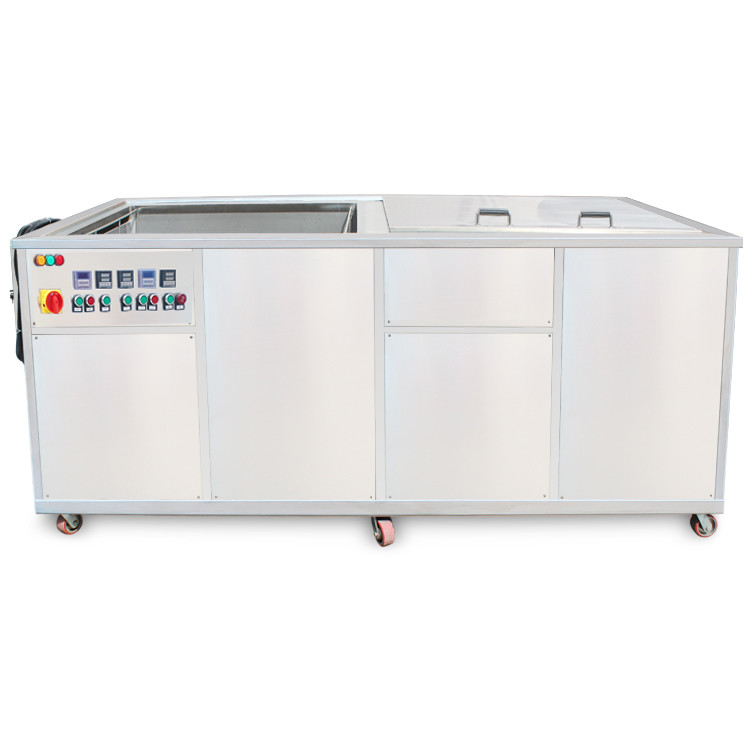Cleaning Aluminum And Case Iron Cylinder Heads And Blocks Aircraft Parts 400 Lt Cleanning Tank Ultrasonic Cleaner Machine
Product Description
Welcome to Aerospace And Aircraft Parts cleaning - Aerospace And Aircraft Parts Cleaning, Truck Engine Parts Cleaning, Motor Bike Engine Parts Cleaning.
Our Ultrasonic cleaning process, can effectively clean the following components- Aerospace And Aircraft Parts ,Aluminum castings, engine blocks, Carburetors, Cylinder Heads, Engines, Engine Components, Gear Boxes, Filters, Tubes and Valves.
AG Aerospace And Aircraft Parts ultrasonic cleaning machine are revolutionizing cleaning methods and processes on the Aerospace , our Aerospace And Aircraft Parts ultrasonic cleaning machine can clean all kinds of automotive, aircraft, and marine engine parts, ultrasonic technology for cleaning parts eliminates manual labor while providing you with superior cleaning action, most parts can be cleaned with environmentally friendly water-based solutions
Ultrasonic cleaning machines work on the principle of agitating cleaning solvents using high frequency sound waves, the ultrasonic agitation creates millions of microscopic bubbles that implode releasing vast quantities of energy, this action, know as cavitations, dislodges any contaminant stuck to the surface of a part, ultrasonic cavitations thoroughly cleans every surface in contact with the cleaning fluid
What Aircraft Ultrasonic Cleaner can do ?
Ultrasonic cleaners remove dirt, oils, lubricants, carbon, rust,and other types of grime that build up on engines and mechanical parts. Grooves, internal passageways, seals, and other hard to reach areas are cleaned easily, eliminating hours of disassembling and reassembling complex parts. Carburetors, pistons, cylinder heads, aluminum parts, and brake calipers are a few examples of components that are cleaned thoroughly with no manual scrubbing in an ultrasonic cleaner
Auto Parts Cleaning machine
We are manufacturing and supplying of Automotive Ultrasonic Cleaners. We offer a wide range of ultrasonic cleaners. These are Single or Multistage Ultrasonic Cleaners, which are both manually operated & fully automated systems. Further, the machine is widely used and appreciated by our clients due to its professional dependability and user friendliness.
Ultrasonic Cleaning system Design:
Considerations in the design of any cleaning system include the contaminants on the part(s), the required cleanliness level, the geometry and material of the part(s), the quantity to be processed, and the previous system design and layout (if applicable). The part geometry, production rate, and cleaning time required will determine the size of the cleaning system, once the overall process has been decided
Cleanliness considerations :
In a typical aqueous ultrasonic cleaning system, it is the cleaning stage(s) that will remove or loosen the contaminants. The following rinse stage(s) remove any remaining loosened soils and residual detergent, and a dryer removes any remaining rinse water. The overall process of the system is usually determined experimentally. We have an applications lab where, through a process of experience, trial, and error, a properly designed cleaning process can be determined to meet the cleanliness levels specified. There are a variety of ways to check for cleanliness. Some are as simple as a water break test on the part to see if most oil has been removed. Others are as elaborate as surface quality monitoring that uses optically stimulated electron emission technology to measure thin films of contaminants down to the Angstrom level.
AGSONIC ultra sonic cleaning of all parts old and new prior to assembly of the engine. This Ultrasonic Cleaning Method is long known as the "benchmark" in cleaning. Ultrasonic cavitation is able to clean right down to the surface of a part and beyond. It is also able to reach internal areas, which are not accessible by using other cleaning means including spray and mechanical agitation. The forceful nature of ultrasonic energy provides the physical "push" required to break the mechanical and ionic bonds that hold very small particles to surfaces.
Ultrasonic Cleaning of Engine Parts, Car engine parts, Truck engine parts and Motor bike engine parts
Our Ultrasonic cleaning process, can effectively clean the following components- Aluminum castings, engine blocks, Carburetors, Cylinder Heads, Engines, Engine Components, Gear Boxes, Filters, Tubes and Valves.
Cylinder Heads And Engine Blocks Ultrasonic Cleaners
Automotive Ultrasonic Cleaners is primarily an aqueous tank systemthat uses ultrasonic energy to remove dirt, grease, oiland baked-on carbon from parts. Contaminants such aspaint, rust, glued-on gaskets, and heavy layers of bake don carbon can also be removed by ultrasonic cleaning but require more aggressive chemistries. Unlike someother cleaning processes, ultrasonic cleaning will notdamage intricate, lightweight, or easily damaged parts.
Model:
ultrasonic tank models for your choice:
| Model |
Tank size |
Unit size |
Volume |
Ultrasonic power |
Frequency |
Heating power |
Timer |
Heating temperature |
| LxWxH(mm) |
LxWxH(mm) |
(L) |
(W) |
(kHz) |
(KW) |
(MIN) |
(℃) |
| T-12S |
500x300x250 |
640x440x470 |
38 |
600 |
28/40 |
1.5 |
1-99 |
0-80
|
| T-18S |
500x350x350 |
640x490x570 |
61 |
900 |
1.5 |
| T-24S |
550x400x400 |
690x540x620 |
88 |
1200 |
3 |
| T-30S |
600x450x400 |
740x590x620 |
108 |
1500 |
3 |
| T-36S |
600x500x450 |
740x640x670 |
135 |
1800 |
4.5 |
| T-48S |
700x500x500 |
840x640x720 |
175 |
2400 |
6 |
| T-60S |
800x600x550 |
940x740x770 |
264 |
3000 |
7.5 |
| T-72S |
1000x600x600 |
1140x740x820 |
360 |
3600 |
9 |
High Capacity Ultrasonic Cleaning Systems are designed for medium and heavy duty industrial applications. They are fully integrated, with an ultrasonic generator and cleaning tank in a single enclosure. A 10-gallon tank capacity is enough to handle large bulky parts or for batch cleaning of small components. High Capacity Ultrasonic Cleaning Systems' deep-drawn tank of 304L stainless steel has no corner welds or other dirt-catching surfaces.
How the System Operates:
The system operates in the following manner:
- Parts are placed into the tank using the included stainless steel basket or other holding fixture.
- Once submerged, the START button is pressed, and the cover is closed. The ultrasonic system turns on, and the filter system turns off automatically. Parts are cleaned with the CROSSFIRE ultrasonic system at this time.
- The system will automatically turn off upon completion of the cycle.
- Operators can then return when the parts are clean.
The cover is opened and the batch of parts is placed onto the basket rest. Dripping liquids are directed back to the ultrasonic cleaning tank
RFQ OF ULTRASONIC CLEANER :
What is cavitation?
"Cavitation" is the rapid formation and collapse of millions of tiny bubbles (or cavities) in a liquid. Cavitation is produced by the alternating high and low pressure waves generated by high frequency (ultrasonic) sound. During the low pressure phase, these bubbles grow from microscopic size until, during the high pressure phase where they are compressed and implode.
Can ultrasonic cleaning damage my parts?
With certain cautions, ultrasonic cleaning is considered safe for most parts. While the effects of thousands of implosions per second is very powerful, the cleaning process is safe since the energy is localized at the microscopic level. The most important cautionary consideration is the choice of cleaning solution. Potentially adverse effects of the detergent on the material being cleaned will be enhanced by the ultrasonics.
When should solutions be changed?
Cleaning solutions should be replenished when a noticeable decrease in cleaning action occurs, or when the solution is visibly dirty or spent. A fresh batch of solution at each cleaning session is usually not required.
Why must I keep solution at a high level?
The solution level should always be maintained. Maintaining the proper solution level provides optimum circulation of solution around parts, and protects heaters and transducers from overheating or stress.
What is the length of cleaning time?
Cleaning time will vary, depending on such things as soil, solution, temperature and the degree of cleanliness desired. Highly visible removal of soils should start almost immediately after the ultrasonic cleaning action begins. Cleaning time adjustment is the easiest (and most often misapplied) factor used to compensate for process variables. Although new application cycle duration can be approximated by an experienced operator, it usually must be validated by actual use with the chosen solution and the actual soiled parts.
What is the purpose of the unit heater?
The primary purpose of the unit heater is to maintain a solution temperature between cleaning cycles. The tremendous energy released by cavitation will generate the heat for cleaning.
How do I know if the unit is cavitating properly?
Most poor cleaning usually results from improper control of one or more process variable(s); such as choosing the wrong detergent solution, insufficient heat, or not allowing enough time for the particular soil to be removed. If you suspect that your ultrasonic cleaner is not cavitating properly, there are two simple tests you can perform: the "glass slide" test and the "foil" test.



 Your message must be between 20-3,000 characters!
Your message must be between 20-3,000 characters! Please check your E-mail!
Please check your E-mail!  Your message must be between 20-3,000 characters!
Your message must be between 20-3,000 characters! Please check your E-mail!
Please check your E-mail! 
